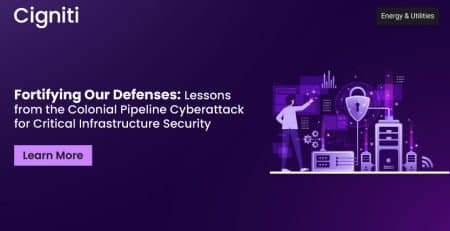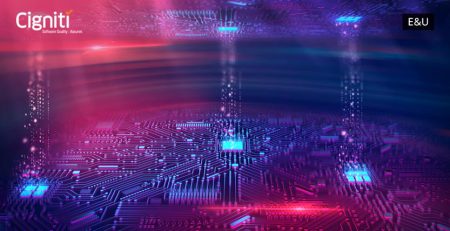The value of disruption in the Utilities industry
|
Listen on the go!
|
The exponential pace of technological advancements is not a news. Everyone is talking about digital disruption and trying to evolve and accommodate as per the latest technology trends. For some organizations, digital is an upgrade, while for others, it is total upheaval and mayhem.
We are hearing about contactless payment technology facilitating faster checkouts, AI-driven bots assisting in critical strategic decision making, robotic surgeries becoming a norm for precision procedures, virtual reality enabling customers to make smart purchase decisions, and what not. Driverless cars and planes are well ahead in their experimentation phase, smart homes are becoming a reality. 5G is already here, while 6G waits for its transition from theory to practice.
Amidst the entire fanaticism around innovating, developing, and adapting new technologies, there is a key aspect that we all should consider – the need for extraordinary amount of energy to power the latest devices, machines, and processes.
The Energy and Utilities sector has been quite slow in its digitalization journey. For being in tandem with the rapidly evolving, digital-first world, the E&U industry will need to catch up with the other sectors in terms of their digital capabilities. It can leverage digital solutions to address and minimize inefficiencies and wastage in the energy value chain.
The digital utility market is expected to grow up to $244.31 Billion by 2022, as per a recent report. Utilities is a capital-intensive market, which is one of the reasons for the dominance of incumbents. Digital disruption is posing as a huge threat for the incumbents and providing entry opportunities to new players.
The legacy infrastructure and unreliable energy distribution often resulted in poor customer satisfaction. With smart grids, customer retention also has become a pain for the utilities company. By embracing the digital revolution, it becomes possible to deliver a data-driven, personalized, and reliable experience to the customers. Let us understand how digital disruption will impart value to the utilities sector:
The new ‘normal’ for customers
E&U has mostly struggled with challenges of poor customer engagement, limited customer insights, and high churn rate. The connected customers expect everything to be just ‘a tap away’. Digital is the new normal for them. They assess their service providers based on their digital portfolio. Digital adoption becomes a means for utilities provider to address these issues and offer services in the way their customers want.
Intelligent energy flow management
After being introduced in the market in early 2000s, smart meters formed the foundation for data analytics in the utilities sector. By facilitating the flow of volumes and volumes of data, smart meters and smart grids make predictive maintenance, supply planning, and outage prevention feasible.
The pool of data collected over the years forms a powerful repository for expanding and leveraging AI-driven data analytic capabilities. Smart grid networks allow the industry to make remote monitoring a reality. This ensures higher reliability and efficiency of the distribution network.
With information comes intelligence. With so much of data at disposal, utilities provider can practically and accurately assess the demand and manage the supply accordingly.
Next-gen energy storage
Storage has been one of the biggest pain points for the E&U sector. A PwC report says, “In recent years, the rapid growth in intermittent renewables on the grid has rejuvenated utility demand for energy storage – both to complement renewables, but also to defer transmission and distribution investment in congested parts of the grid and to improve local frequency regulation.”
Having storage systems tied with grid systems bestow direct ownership to utilities providers. To deliver the combined benefit of flexibility and reliability, advanced battery systems are being developed that will be highly efficient and offer a range of applications to give more control to the end users.
Emphasizing innovation
PwC predicts 5 possible scenarios that will unfurl in the coming future.
- Losing touch: Incumbent energy providers will lose touch with the end users as certain ‘home hubs’ will start acting as a middle agent between the two.
- Off grid: We can expect distributed generation as well as on-site generation and storage. This will shift the load from the main grid, rendering it a source of back-up power.
- Mobile and virtual: As electric vehicles become mainstream, local utilities providers and circuits will face heavy strain. There will be a need for substantial investments in infrastructure and mass storage capacity.
- Data rich: The sensors integrated into the smart grid network across the distribution chain will collect and transmit energy flow and performance data from all the levels. This will empower the utilities providers to process and interpret the information for offering value-based services to customers.
- Scaled down: With site-based generation set to become a norm, large businesses will start installing their own decentralized power generation hubs.
To conclude – bringing agility in delivery
The utilities sector needs to strengthen its capabilities in innovation, technology, and pricing for retaining the customers and diminishing the churn rate. By leveraging data, it can not only minimize redundancies and wastage but also satisfy the personal as well as business needs of customers.
While the industry embraces digital disruption, it should also consider the factor of quality. If the sector is using poorly executed and implemented technologies, they will be very easily driving their customers away.
Just like the smart network, the sector needs to take a smart approach to assure quality of its digital initiatives. This may involve assuring proper implementation of integration services, multi-channel interfaces, cloud adoption, omni-channel and multi-platform performance, among others.
Cigniti understands the testing needs of the E&U landscape which is undergoing massive transformation from existing systems to better ways of consumption, production, and distribution. Having delivered comprehensive testing services to E&U organizations in the US, UK, and Europe, we bring higher test coverage, test acceleration, and tool agnostic test frameworks. Speak to our experts to enrich QA initiatives across change management, compliance programs, and executive monitoring.





Leave a Reply